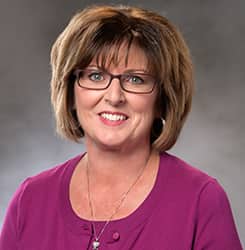Are you familiar with what kissing bugs are? If you are, you know that there is nothing romantic about them at all. But kissing and Valentine's Day go together, so we're using this as an opportunity to get the word out about kissing bugs to help Hendersonville residents protect themselves from these potentially dangerous bugs. Here's what you need to know most.
What Is A Kissing Bug?
A kissing bug is an insect in the family of Triatominae and in the subfamily of Reduviidae. It gets its name from the fact that it prefers to bite people around the mouth—and also the eyes.
What Does A Kissing Bug Look Like?
It is approximately 25 mm in length. That's about 1 inch. Its coloration will vary with species, but it will be brown or black with red, yellow, or brown markings on the abdomen. It is an elongated oval shape and it shares some visual similarities with boxelder bugs. If you're familiar with boxelder bugs, you will be able to tell the difference between a boxelder bug and a kissing bug by looking at its nose. The head and nose of a kissing bug looks pointed, like a weevil. The head of a boxelder bug is a rounded, triangular shape.
Why Are Kissing Bugs Dangerous?
The kissing bug is capable of carrying the parasite Trypanosoma cruzi, which is known to cause Chagas disease. If you are not familiar with Chagas disease, it is an illness that has had a wide-reaching impact in South America, affecting millions of people. The symptoms of Chagas include swelling of the bite wound, swollen lymph nodes, skin rash, headache, body aches, fever, fatigue, nausea, vomiting, diarrhea and more. In the body, it can lead to liver and spleen enlargement, dilation of the colon, and organ damage. In severe cases, it can be fatal. More often, it leads to ongoing medical complications.
The Good and Bad News About Kissing Bugs
Cases of Chagas disease are extremely rare in the United States. That is certainly good to know. But a recent study published by the CDC indicates that there is cause for concern. Of the kissing bugs collected in the study, 40 percent had recently fed on human blood. It was surprising because the 11 species of kissing bugs found in the United States were not previously thought to feed on humans. So, due to the potential severity of Chagas disease, the CDC is actively tracking the outbreak potential of this disease, and they warn U.S. residents to take precautions.
How Nervous Should You Be About Kissing Bugs?
You don't need to lose sleep over kissing bugs. The threat level is currently low. Plus, kissing bugs are nocturnal insects. If you don't have these bugs getting into your home and you don't spend a lot of time camping, you don't need to be too concerned.
Kissing Bug Bite Prevention
The frontline defense against kissing bugs is to seal potential entry points on the exterior of your home. You're probably already doing this to keep all of the other bugs out of your home. But, if insects are still getting in, it means that kissing bugs can get in as well. This is when it is a good idea to enlist the aid of a pest control provider. All-American Pest Control provides industry-leading residential pest control services in Hendersonville and throughout Middle Tennessee. If you need assistance finding a plan that will effectively keep insects out of your home, without breaking your budget, connect with us today. Click on the chat button at the bottom of the screen. One of our agents will guide you through the process. Or request a free home evaluation, and we'll send a service professional right to your Hendersonville home. When it comes to keeping pests out, you can count on the service team at All-American Pest Control.
 1277 Reviews
1277 Reviews


